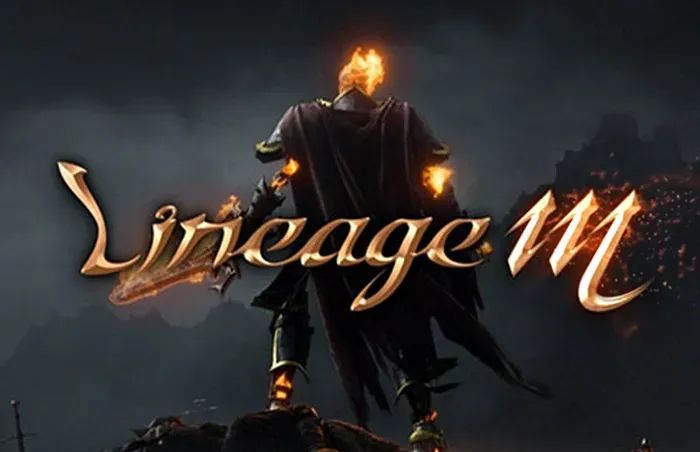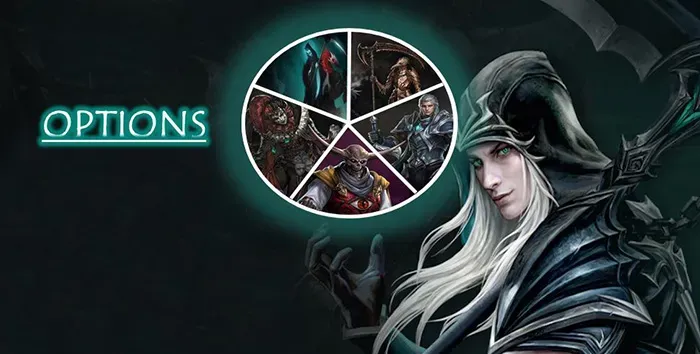
By Winifred Phillips | Contact | Follow
Delighted you’re here! I’m video game composer Winifred Phillips. Welcome to the fifth and concluding installment in this article series based on my Game Developers Conference 2022 presentation, “Composing for Lineage M: Modular Construction in Game Music.” You’ll find the entire contents of my GDC lecture in these articles, accompanied by all of the included videos and some of the images from the Powerpoint presentation I used during my conference session.
During the previous four articles in this series, we learned about how NCSoft ported the original world-famous Lineage PC game from 1998 to mobile devices under the name Lineage M. We discussed how the launch of brand-new DLC content for this mobile port raised an unusual conundrum. How does a modern game composer create new music that will work effectively within a game engine originally devised in the 1990s? In the previous articles of this series, we discussed the popular DLC release of Lineage M: The Elmor, and I described what it was like creating new music for such an awesome game with an amazingly long history and enduring fanbase.

By planning out the music system of this game with a modular philosophy, the expert audio team at NCSoft and I were able to extend the utility of the music across a large assortment of gameplay scenarios. Structural elements such as rhythmic values, dominant frequency ranges, tempo, key signature, melodic themes and musical sections were all treated as separate units within the modular structure, in order to best enable the music to be disassembled and juggled into new configurations. You’ll find all these ideas discussed in detail in these four articles:
Part One: Techniques for Modular Game Music (Composing for Lineage M: GDC 2022)
Part Two: Structure for Modular Game Music (Composing for Lineage M: GDC 2022)
Part Three: Stemming for Modular Game Music (Composing for Lineage M: GDC 2022)
Part Four: Segmentation for Modular Game Music (Composing for Lineage M: GDC 2022)
We just concluded our discussion of the role that stemming plays in the modular approach. So that brings us to the practical implementation strategy for the rest of the in-game music. As we’ve discussed, this gameplay music is made up of interchangeable component parts, and we’ve examined how these modules were arranged – the guiding principles that determined how musical content would be divided into units and sections.
So let’s take a look at one distinct section of music from the modular system, and see how it evolves – first as an ambient track, then moving into a larger mix, and finally as a high-energy action track:
As you can see – when a system like this is carefully designed, one section of a composition can split off into many components – and these can go in multiple directions, accomplishing lots of different objectives. This mix-and-match philosophy greatly extended the utility of the in-game music for Lineage M: The Elmor. While this expanded utility stretched across the five territories that comprised the city of Escaros, the largest benefit came from its use in a special timed challenge mode, called the Touchdown Event.

In the Lineage M Touchdown Event, players engage in huge multiplayer battles during a wild free-for-all spanning the entirety of the game’s new DLC territories. Battle is structured around timed rounds, at 10 minutes each. In order to give these battles some meaningful weight and a sense of history, we combined elements from multiple in-game music segments to create a 10-minute megamix. By combining ideas from lots of different music segments, the music of the Touchdown Event was able to touch upon musical themes that had been previously experienced during other forms of gameplay. This allowed the Touchdown Event to feel particularly special, as though it were a culmination of all the events leading up to this point. In my book, A Composer’s Guide to Game Music (The MIT Press), I devoted a chapter to the importance of musical themes in video games:
“We know that a musical theme expressed within the body of a video game is experienced differently than themes in passive forms of entertainment, like television and film. In a game, a musical theme accompanies an activity that the player s of the game are performing. The music has essentially become the soundtrack to the personal adventures of the players. When the music swells at a pivotal moment and a recognizable melody begins, the players hear that melody just as they are engaging in an activity they enjoy… Using a symbolic language, themes communicate eloquently, and give game composers a voice with which to speak directly to the player. This voice becomes an important tool for the game composer, and one of the most powerful ways in which we can express our artistry and our passion.” (Chapter 4, pages 56, 73)
In addition to these melodic and harmonic structures, one of the most dominant elements during the timed Touchdown Event is percussion. This is where the elaborate percussion stemming process came in very handy.

The team at NCSoft and I juggled the percussion recordings into multiple stem configurations during the runtime of the 10 minute megamix, and this greatly extended the life of the music across this lengthy gameplay sequence. So let’s see what that was like:
Lineage M – Touchdown Event – music composed by Winifred Phillips from winifredphillips on Vimeo.
So now we’ve discussed the concept of modular construction in game music. We’ve considered how dividing a composition into segments can enable the order of musical ideas to be rearranged, and we’ve looked at why a common tempo and key signature can enable this approach. We’ve thought about how melody, counter melody, rhythm, and instrumentation can be developed into independent modules for use within the modular structure. We’re examined the importance of stemming, including methods for subdividing stems in a more heavily detailed way – with both rhythmic and frequency characteristics used as guides. We’ve checked out these techniques in their simpler applications for the user interface, and the more complex approaches that were applied during gameplay.

As we discussed when this talk began, game developers are typically obsessed with progress, always innovating, always looking to the future. However, by composing music for a game that had a stringently retro design, the team at NCSoft and I had the chance to apply some modern dynamic techniques to a classic linear implementation structure. In the process, I got a bit of insight into why we make music interactive in the first place.
Dynamic techniques not only allow our music to react, they also allow us to squeeze every last drop of in-game utility out of the music we create. This gives up what we need most – more options.

Composing the music of Lineage M: The Elmor became an opportunity to focus attention on the past, and in so doing, to learn some lessons for the future of our work as game composers.
So that concludes this five-article series on the modular construction of the music for Lineage M: The Elmor. I tried to provide some ideas that can be taken into other game music projects, and I hope you found them interesting! Thanks very much for reading!

Winifred Phillips is a BAFTA-nominated video game composer whose latest project is the Jurassic World Primal Ops video game (the official game of the blockbuster movie Jurassic World Dominion). Other recent releases include the hit PlayStation 5 launch title Sackboy: A Big Adventure (soundtrack album now available). Popular music from Phillips’ award-winning Assassin’s Creed Liberation score was featured in the performance repertoire of the Assassin’s Creed Symphony World Tour, which made its Paris debut in 2019 with an 80-piece orchestra and choir. As an accomplished video game composer, Phillips is best known for composing music for games in many of the most famous and popular franchises in gaming: the list includes Assassin’s Creed, God of War, Total War, The Sims, and Sackboy / LittleBigPlanet. Phillips’ has received numerous awards, including an Interactive Achievement Award / D.I.C.E. Award from the Academy of Interactive Arts and Sciences, six Game Audio Network Guild Awards (including Music of the Year), and three Hollywood Music in Media Awards. She is the author of the award-winning bestseller A COMPOSER’S GUIDE TO GAME MUSIC, published by the MIT Press. As one of the foremost authorities on music for interactive entertainment, Winifred Phillips has given lectures at the Library of Congress in Washington DC, the Society of Composers and Lyricists, the Game Developers Conference, the Audio Engineering Society, and many more. Phillips’ enthusiastic fans showered her with questions during a Reddit Ask-Me-Anything session that went viral, hit the Reddit front page, received 14.9 thousand upvotes, and became one of the most popular gaming AMAs ever hosted on Reddit. An interview with her has been published as a part of the Routledge text, Women’s Music for the Screen: Diverse Narratives in Sound, which collects the viewpoints of the most esteemed female composers in film, television, and games. Follow her on Twitter @winphillips.







